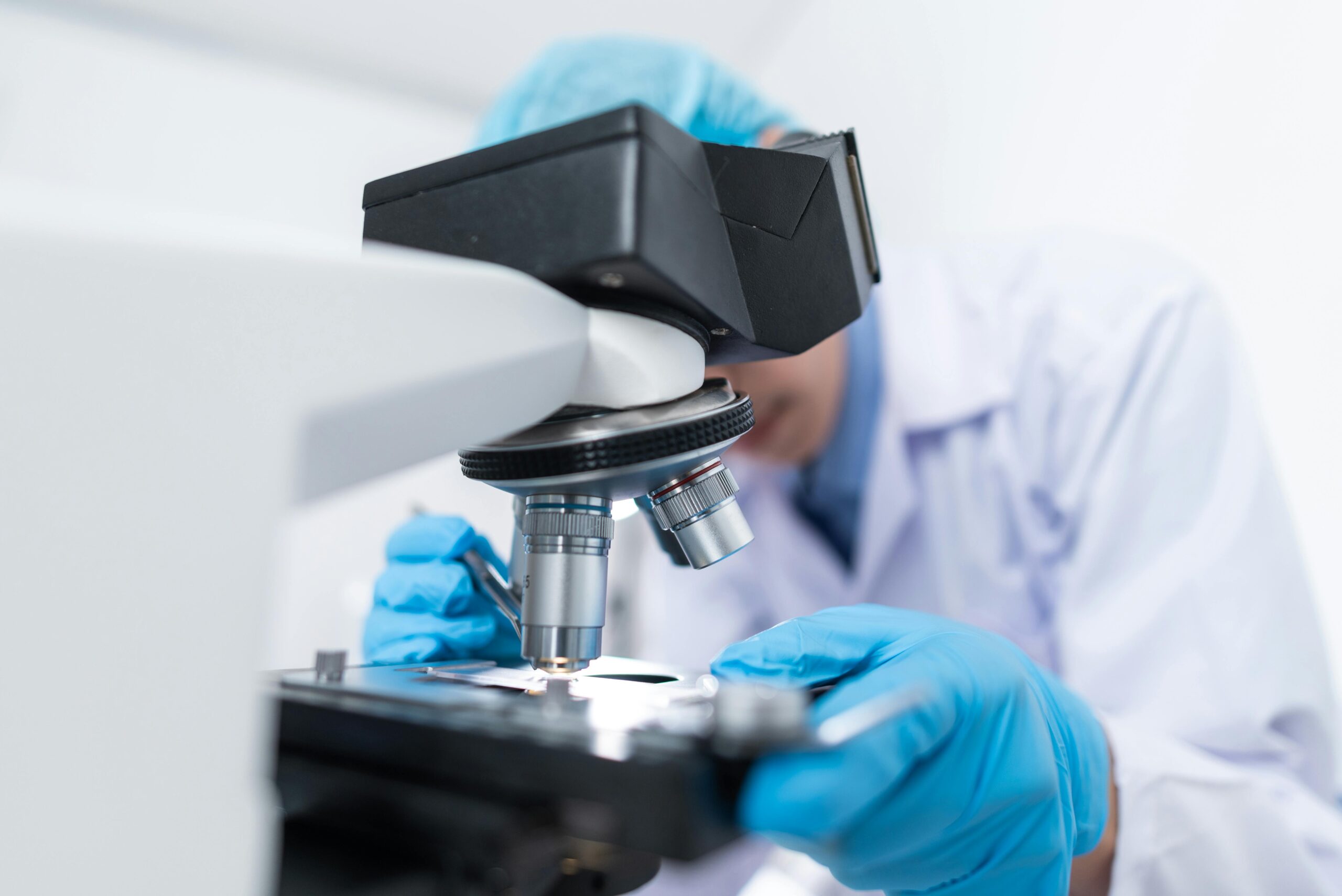The revolutionary gene-editing tool CRISPR has transformed biological research, offering unprecedented capabilities to modify DNA with precision. Yet this transformative technology presents a profound dual-use dilemma that demands careful navigation between scientific progress and global security concerns.
As we stand at the crossroads of biological innovation, the scientific community faces an unprecedented challenge: how to harness the remarkable potential of CRISPR technology while simultaneously preventing its misuse. This delicate balance between advancement and protection defines one of the most critical policy discussions of our generation, affecting healthcare, agriculture, environmental conservation, and international security.
🧬 Understanding the CRISPR Revolution and Its Double-Edged Nature
CRISPR-Cas9, discovered and adapted from bacterial immune systems, has democratized genetic engineering in ways previously unimaginable. The technology’s accessibility, affordability, and ease of use have accelerated research across countless laboratories worldwide, creating breakthrough treatments for genetic diseases and revolutionary agricultural applications.
However, these same characteristics that make CRISPR a powerful research tool also create significant biosecurity vulnerabilities. The technology’s simplicity means that individuals with basic molecular biology training can potentially manipulate dangerous pathogens, create novel biological threats, or engineer organisms with unpredictable consequences for ecosystems and public health.
The dual-use dilemma emerges from this fundamental tension: research intended for beneficial purposes can be repurposed for harmful applications. A study developing resistance to crop diseases could inform the creation of agricultural bioweapons. Research enhancing virus transmissibility to study pandemic preparedness could enable bioterrorism. This reality demands sophisticated governance frameworks that protect innovation while preventing catastrophic misuse.
The Expanding Landscape of CRISPR Applications
Understanding the breadth of CRISPR applications helps illuminate why biosecurity concerns have intensified. In medicine, researchers are developing treatments for sickle cell disease, certain cancers, and hereditary blindness. Agricultural scientists are engineering drought-resistant crops and disease-resistant livestock. Conservation biologists are exploring gene drives to control invasive species and vector-borne diseases.
Each application carries both promise and risk. Gene drives, for instance, could eliminate malaria by rendering mosquito populations unable to transmit the parasite. Yet the same technology could devastate ecosystems if accidentally or deliberately released in harmful configurations. Therapeutic applications targeting human germline cells could eliminate hereditary diseases but raise profound ethical questions about human enhancement and unintended genetic consequences.
Quantifying the Risk-Benefit Spectrum 📊
Assessing dual-use potential requires evaluating multiple dimensions of risk and benefit. Security experts consider factors including accessibility of materials, required expertise level, potential scale of harm, and likelihood of detection. Simultaneously, they weigh therapeutic value, agricultural benefits, and scientific knowledge generation.
| Application Area | Potential Benefits | Biosecurity Concerns | Risk Level |
|---|---|---|---|
| Somatic Gene Therapy | Disease treatment, improved patient outcomes | Limited; primarily patient safety issues | Low |
| Germline Editing | Hereditary disease elimination | Unintended genetic changes, enhancement debates | Medium |
| Pathogen Research | Vaccine development, pandemic preparedness | Enhanced pathogen creation, accidental release | High |
| Gene Drives | Disease vector control, invasive species management | Ecosystem disruption, weaponization potential | High |
Current Governance Frameworks and Their Limitations
International biosecurity governance relies on a patchwork of treaties, national regulations, and voluntary guidelines. The Biological Weapons Convention, established in 1975, prohibits biological warfare but lacks verification mechanisms and doesn’t specifically address modern biotechnology. National regulations vary dramatically, creating opportunities for regulatory arbitrage where research denied approval in one jurisdiction moves to countries with less stringent oversight.
Scientific self-governance has played a crucial role, with researchers periodically calling for voluntary moratoria on particularly risky experiments. The 2015 International Summit on Human Gene Editing represented such efforts, establishing guidelines for germline editing research. However, the 2018 announcement of CRISPR-edited babies in China demonstrated the limitations of voluntary compliance and highlighted enforcement challenges.
The Regulatory Gap Challenge 🔍
Technology advances faster than policy can adapt. When CRISPR-Cas9 became widely accessible in 2013, existing regulations addressed older genetic modification techniques that were more expensive, time-consuming, and required specialized facilities. CRISPR’s rapid adoption exposed gaps in biosafety protocols, institutional review processes, and international coordination mechanisms.
Regulatory uncertainty creates additional complications. Researchers may struggle to determine whether specific experiments require special approval, potentially either stifling legitimate research through excessive caution or proceeding with inadequate oversight. Unclear guidelines particularly affect emerging research areas where dual-use implications aren’t immediately obvious.
Balancing Open Science and Security Imperatives
Scientific progress traditionally relies on open communication, data sharing, and collaborative research. The scientific method’s reproducibility requirement necessitates detailed publication of materials and methods. Yet this openness creates biosecurity vulnerabilities when research involves potentially dangerous organisms or techniques.
The debate intensified following controversial gain-of-function research involving influenza viruses. Scientists argued that understanding how pathogens acquire dangerous properties is essential for pandemic preparedness. Critics warned that publishing such information provides blueprints for bioterrorism. This tension between scientific transparency and security concerns continues to shape publication policies and funding decisions.
Strategies for Responsible Information Sharing 📢
Several approaches attempt to balance openness and security. Some journals require manuscripts involving dual-use research to undergo additional security review before publication. Others redact specific technical details while publishing general findings. Some research institutions implement tiered access systems, providing full methodological details only to verified researchers.
- Pre-publication security review by expert panels combining scientific and security expertise
- Selective redaction of information deemed most dangerous while preserving scientific value
- Controlled access repositories where verified researchers can obtain detailed protocols
- Enhanced screening of equipment and materials sales to identify concerning purchase patterns
- International registries for high-risk research projects to facilitate oversight and coordination
Each approach involves tradeoffs. Security review may delay important public health information. Redaction risks making research non-reproducible, undermining scientific validity. Access controls may disadvantage researchers in developing countries who lack institutional credentials. These complications require nuanced implementation tailored to specific research contexts.
Building a Culture of Responsible Research 🛡️
Technical controls and regulatory frameworks alone cannot address dual-use challenges. Cultivating responsibility awareness among researchers represents an equally critical component of biosecurity strategy. Many scientists receive extensive training in experimental techniques but limited education about dual-use implications or ethical decision-making frameworks.
Education initiatives increasingly integrate biosecurity modules into graduate training programs. These programs teach researchers to recognize dual-use potential in their work, understand relevant regulations, and navigate ethical dilemmas. Case studies examine historical incidents where well-intentioned research created security concerns, helping scientists anticipate potential misuse scenarios.
Institutional Biosafety and Ethics Infrastructure
Research institutions bear responsibility for establishing robust oversight mechanisms. Institutional biosafety committees review research protocols, assess containment adequacy, and monitor ongoing projects. Ethics review boards evaluate research involving human subjects or sensitive applications. However, these committees face challenges when evaluating cutting-edge technologies where precedents don’t exist.
Effective oversight requires continuous training for committee members, integration of diverse expertise including security specialists, and adequate resources for comprehensive review. Institutions must also establish clear reporting channels for researchers who identify dual-use concerns in their work or that of colleagues, protecting whistleblowers from retaliation while preventing false accusations from disrupting legitimate research.
International Cooperation and Harmonization Efforts 🌍
Biosecurity challenges transcend national borders, requiring coordinated international responses. Pathogens don’t respect political boundaries, and research conducted in one country can affect global security. Yet international cooperation faces obstacles including divergent national interests, varying regulatory philosophies, and concerns about economic competitiveness.
Several initiatives aim to strengthen global biosecurity governance. The World Health Organization coordinates pandemic preparedness and laboratory biosafety standards. The Biological Weapons Convention review conferences provide forums for updating treaty provisions. Regional organizations develop harmonized regulations to prevent regulatory arbitrage within geographic areas.
The Role of Funding Agencies in Shaping Research Direction
Government research funding powerfully influences which projects proceed and under what conditions. Funding agencies can implement biosecurity requirements, mandate ethics training, and prioritize applications with clear beneficial purposes and minimal misuse potential. The balance between enabling promising research and preventing dangerous work shapes the entire research landscape.
Some funding bodies have adopted explicit dual-use review processes, requiring applicants to address potential security implications and propose mitigation strategies. Others fund research specifically aimed at developing countermeasures against biological threats. These policies signal priorities while potentially creating incentives that shape researcher behavior and career trajectories.
Technological Solutions and Monitoring Systems 💻
Technology itself offers tools for managing biosecurity risks. DNA synthesis screening helps prevent unauthorized creation of dangerous genetic sequences. Companies synthesizing custom DNA oligonucleotides can check orders against databases of sequences associated with pathogens or toxins, flagging suspicious requests for investigation.
However, technological screening faces limitations. Sophisticated actors can fragment orders across multiple suppliers or introduce minor sequence modifications that evade detection while preserving function. Screening effectiveness depends on comprehensive databases, international coordination among suppliers, and regular updates as new threats emerge. Critics also note privacy concerns and potential barriers to legitimate research if screening produces false positives.
Emerging Monitoring and Detection Capabilities
Artificial intelligence and machine learning increasingly contribute to biosecurity efforts. Algorithms can analyze research proposals to identify potential dual-use concerns, monitor scientific literature for dangerous information, and predict which pathogens might pose future pandemic risks. Genomic surveillance systems track pathogen evolution, potentially detecting engineered organisms or deliberate releases.
These capabilities raise important questions about implementation. Who operates monitoring systems? What transparency requirements should apply? How are false positives handled? Overly aggressive surveillance might chill legitimate research and infringe academic freedom, while insufficient monitoring leaves vulnerabilities. Finding appropriate balance requires ongoing dialogue among scientists, security professionals, and civil liberties advocates.
Preparing for Future Challenges and Emerging Technologies 🔮
CRISPR represents just one biotechnology raising dual-use concerns. Gene synthesis continues becoming cheaper and more accessible. Artificial intelligence accelerates biological discovery, potentially identifying dangerous applications alongside beneficial ones. Synthetic biology enables construction of organisms from scratch, creating possibilities beyond natural evolution.
Adaptive governance frameworks must anticipate emerging challenges rather than merely reacting to realized threats. This requires horizon scanning initiatives that identify technologies with security implications before widespread deployment, interdisciplinary research exploring potential misuse scenarios, and flexible regulatory structures that can accommodate rapid technological change without requiring complete legislative overhaul.
The Path Forward: Integration and Collaboration
Addressing the dual-use dilemma demands integration across multiple domains. Scientific advancement, security concerns, ethical considerations, economic interests, and public values all inform optimal policy. No single stakeholder group possesses sufficient expertise or authority to navigate these complexities alone.
Meaningful progress requires sustained dialogue among researchers, security professionals, ethicists, policymakers, and affected communities. Scientists must engage seriously with security concerns rather than dismissing them as impediments to research. Security experts must appreciate scientific complexity and avoid policies that would unnecessarily constrain beneficial work. Policymakers must craft regulations that are scientifically informed, practically implementable, and democratically legitimate.
Empowering the Next Generation 🎓
Today’s students will inherit both CRISPR’s transformative potential and its associated challenges. Educational initiatives must prepare them not only with technical skills but with ethical frameworks for navigating dual-use dilemmas. This includes understanding historical context, recognizing diverse cultural perspectives on appropriate technology use, and developing judgment for weighing competing considerations.
Interdisciplinary training programs that combine biological sciences with ethics, security studies, policy analysis, and social sciences can cultivate leaders equipped to guide responsible innovation. Mentorship programs connecting students with experienced researchers who have navigated dual-use challenges provide practical wisdom complementing formal education.

Safeguarding Innovation While Protecting Humanity 🔐
The dual-use dilemma of CRISPR research ultimately reflects broader questions about humanity’s relationship with powerful technologies. Throughout history, transformative innovations have brought both tremendous benefits and serious risks. Successfully managing these technologies requires wisdom, foresight, and commitment to collective wellbeing alongside individual advancement.
CRISPR technology will continue advancing regardless of security concerns. The relevant question isn’t whether innovation proceeds but how it unfolds. Will we develop robust governance frameworks that enable beneficial applications while preventing catastrophic misuse? Will international cooperation prove sufficient to address transnational threats? Will researchers embrace responsibility for anticipating and mitigating risks?
The answers will shape not only biotechnology’s trajectory but the future of human health, environmental stability, and global security. By thoughtfully balancing innovation and biosecurity, implementing adaptive governance, fostering responsible research culture, and maintaining open dialogue across disciplines and borders, we can harness CRISPR’s remarkable potential while safeguarding against its dangers. This challenge demands our sustained attention, collaborative effort, and unwavering commitment to both scientific progress and human flourishing.
The path forward requires courage to innovate, wisdom to anticipate consequences, humility to acknowledge uncertainty, and determination to build systems that serve humanity’s best interests. As CRISPR technology continues evolving, so too must our approaches to governance, education, and international cooperation. The dual-use dilemma presents not an insurmountable obstacle but an opportunity to demonstrate that human ingenuity extends beyond technical innovation to encompass the ethical and institutional frameworks necessary for responsible stewardship of powerful technologies.
Toni Santos is a biotechnology storyteller and molecular culture researcher exploring the ethical, scientific, and creative dimensions of genetic innovation. Through his studies, Toni examines how science and humanity intersect in laboratories, policies, and ideas that shape the living world. Fascinated by the symbolic and societal meanings of genetics, he investigates how discovery and design co-exist in biology — revealing how DNA editing, cellular engineering, and synthetic creation reflect human curiosity and responsibility. Blending bioethics, science communication, and cultural storytelling, Toni translates the language of molecules into reflections about identity, nature, and evolution. His work is a tribute to: The harmony between science, ethics, and imagination The transformative potential of genetic knowledge The shared responsibility of shaping life through innovation Whether you are passionate about genetics, biotechnology, or the philosophy of science, Toni invites you to explore the code of life — one discovery, one cell, one story at a time.



